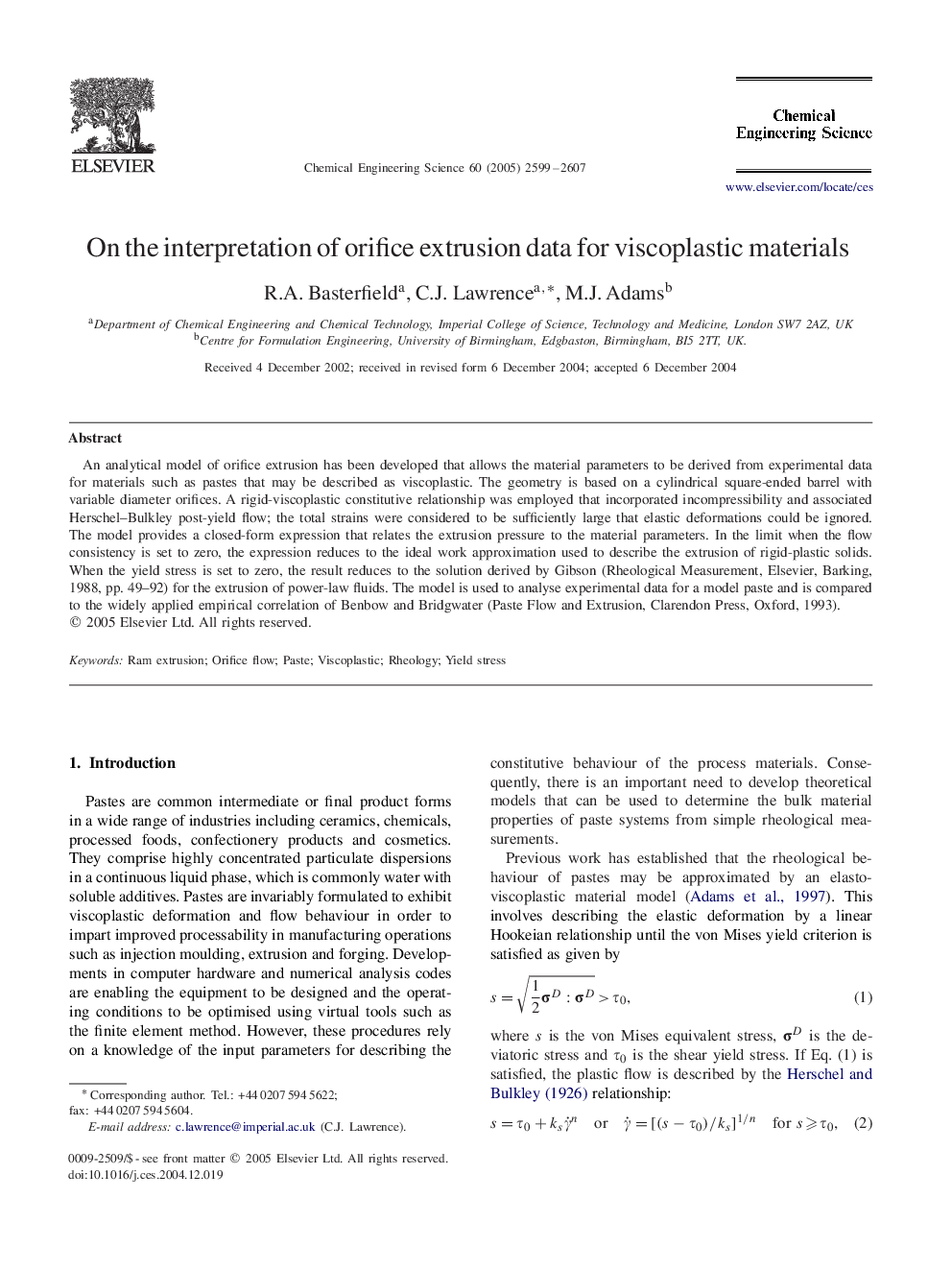| Article ID | Journal | Published Year | Pages | File Type |
|---|---|---|---|---|
| 160319 | Chemical Engineering Science | 2005 | 9 Pages |
An analytical model of orifice extrusion has been developed that allows the material parameters to be derived from experimental data for materials such as pastes that may be described as viscoplastic. The geometry is based on a cylindrical square-ended barrel with variable diameter orifices. A rigid-viscoplastic constitutive relationship was employed that incorporated incompressibility and associated Herschel–Bulkley post-yield flow; the total strains were considered to be sufficiently large that elastic deformations could be ignored. The model provides a closed-form expression that relates the extrusion pressure to the material parameters. In the limit when the flow consistency is set to zero, the expression reduces to the ideal work approximation used to describe the extrusion of rigid-plastic solids. When the yield stress is set to zero, the result reduces to the solution derived by Gibson (Rheological Measurement, Elsevier, Barking, 1988, pp. 49–92) for the extrusion of power-law fluids. The model is used to analyse experimental data for a model paste and is compared to the widely applied empirical correlation of Benbow and Bridgwater (Paste Flow and Extrusion, Clarendon Press, Oxford, 1993).
